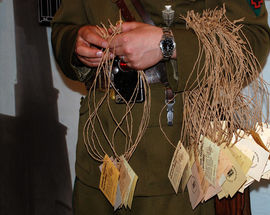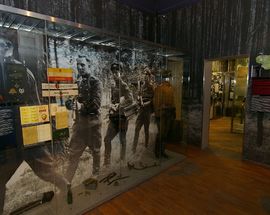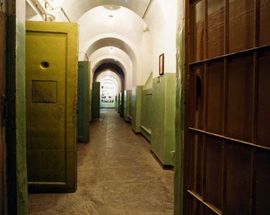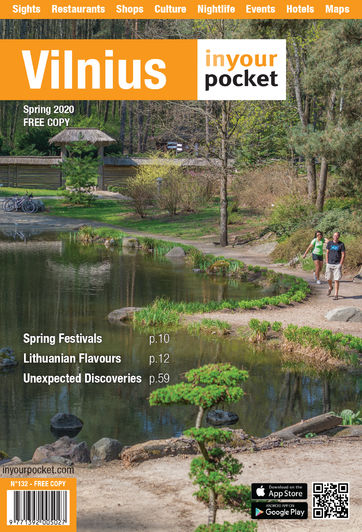The former headquarters of both the NKVD/KGB and the Gestapo is today home to this museum dedicated almost exclusively to the memory of Lithuanian suffering under Soviet occupation with a passing—and some would say begrudging— nod to what the Nazis and their Lithuanian accomplices got up to in the country between 1941 and 1944. A must-see for anyone with an interest in how states can transform into criminal organisations, among the catalogue of horrors on display are grainy black and white photographs of atrocities and several cells in the basement where torture and a bullet in the back of the head were once an everyday occurrence in this part of the world.
Museum of Occupation & Freedom Fights
Amenities
City centre location
Open
Open 10:00 - 18:00, Sun 10:00 - 17:00. Closed Mon, Tue.
Price/Additional Info
Admission €4/1.








Comments
JZ
Canada
I concur with the other previously listed comments, and IYP. It is a must see for any visitor to Lithuania. Expect an emotional visit to the cells below, and the stories written upstairs are fascinating. I have taken students here, and they really appreciate learning of the plight of the Lithuanian people. Highly recommended!
Lance Grundy
A very interesting museum that is well worth an hour of anyone's time. Although officially called 'The Victims of Genocide Museum' I noticed that many local maps and guides referred to it as 'The KGB Museum' a name which would perhaps be more apt as the focus here is mostly on the crimes committed by the communist occupiers rather than those committed by the Nazis and their Lithuanian collaborators. Having officially called itself the 'Victims of Genocide Museum' it does have a duty to treat communist and Nazi perpetrated genocides equally - which is something it singularly fails to do dedicating just one small room to the murder of the city's Jewish population. However there is also a Halocaust Museum which covers the Nazi period more comprehensively.Anyhow this museum is arranged over 3 floors and includes a number of fascinating exhibits and multimedia displays which tell the story of what happened to the Lithuanians under communism. The arrests shootings deportations and mass murders are all comprehensively explained and illustrated with photographs and artefacts. You can also see the grisly cells & torture chambers in the basement something those of a sensitive disposition may wish to avoid. The most interesting part of the museum for me was the section dedicated to the story of the 'Forest Brothers'. These were bands of partisans who hid in the forests of Lithuania after the Second World War and fought the Soviet occupiers until well into the 1950s. I'd neber heard of these anti-communist freedom fighters before there were similar groups operating in Latvia & Estonia and I found their story fascinating. There's a great booklet that tells their story called "War after War" which you can buy in the museum shop for a couple of litas. It's well worth a flick through on the journey home.
Martin
Was very moving. I'm not big into museums and came upon this by accident but this was really very interesting and shed light on a subject most outside Lithuania know very little about. It's housed in the former KGB detention centre a very worthwhile visit. If you're at all an emotional person (as I am) then be prepared. Very glad I saw it.
Ian
Vital visit. Quietened a group of unruly teenagers as effectively as Dachau! Required to understand war of any temperature and occupation to any degree!